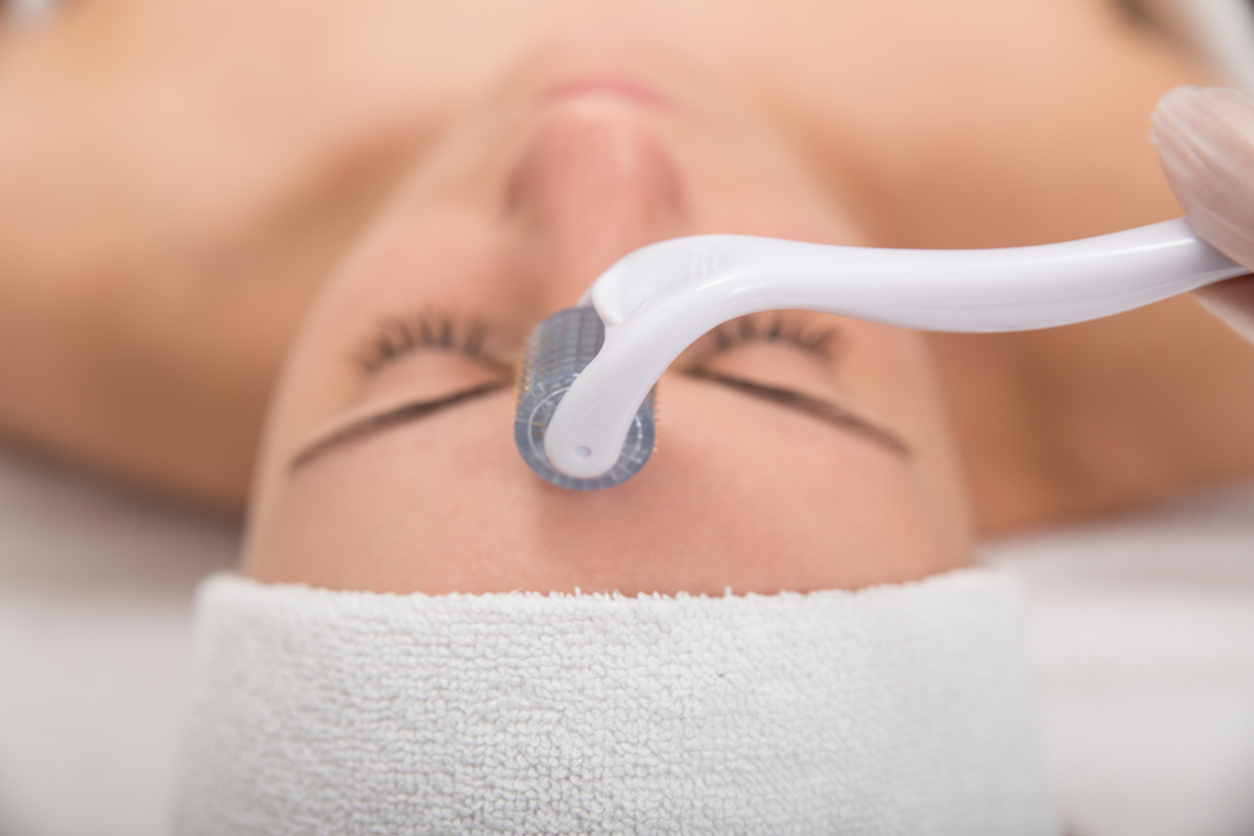
The age-old saying “beauty is pain” entails that beauty comes at a high cost – and a painful one at that. While I vehemently disagree with this adage, the re-emergence of the popularity of the derma-roller begs to differ. This needle-lined device lightly pricks the skin as it glides across the face, promising to leave that ever-so-evasive glow in its path.
To be fair, the derma-roller isn’t so painful that it should scare you. In fact, you can use it at home, without assistance, and witness incredible results. It’s effective, even if it pinches a bit.
What’s a Derma-Roller?
The benefits of the derma roller are two-fold: improve the appearance of the skin and, due to penetration of the needles, better absorb active ingredients from topical skincare treatments.
A derma-roller is a device that is equipped with hundreds of tiny needles. When rolled across the skin, a derma-roller creates micro-wounds on the skin. These punctures are what stimulate the skin to repair itself by creating new collagen and regenerating cells. Collagen and elastin are produced on overdrive to heal the wounds and, ultimately, leave your complexion tighter and plumper than it was before. For aging skin, the derma-roller is praised for its ability to fill in fine lines and wrinkles as well as to thicken and plump under-eye skin.
Essentially, the derma-roller is an at-home version of micro-needling, which is a medical procedure that is widely used to improve the complexion, but always in the presence of a trained medical professional. Unlike a more intense, in-office treatment used by dermatologists, such as the derma-pen (electronic micro-needling device that oscillates as it punctures the skin), the derma-roller is affordable and can be used in the comfort of your own home and, thankfully, with a lower pain threshold.
Does it Work?
Micro-needling is a dermatological skin rejuvenation therapy that has been proven to be a simple, safe, effective, and minimally invasive therapeutic technique. The derma-roller is a softened version of micro-needling. It is commonly used to treat acne scars, acne, burn scars, alopecia, stretch marks, crow’s feet, sun damage, rough skin texture, hair loss, wrinkles, and fine lines.
How to Use It
To begin, it is important to address that the efficacy (and potential danger) lies in the size of the needle. The size of the needle depends on what your goals are.
If you simply want to increase skincare product absorption, opt for a 0.25 mm needle, using it every other day. No bleeding or irritation will occur.
If you are looking to treat shallow wrinkles, scars, UV damage, andhyperpigmentationn, use a 0.5 mm needle, but only once every two weeks or month.
A 0.75 mm to 1.0 mm needle thickness is the most effective for all skin conditions, but derma-rollers with such needle thickness ranges will be painful and cause bleeding. You will have to allow at least one week for your skin to heal before seeing results. Skin redness, dryness, and peeling are common. Use these size needles on your derma-roller only once every six weeks! You should only use the derma-roller on skin that is healed and free of any irritation from pervious derma-rolling treatments.
Once you have nailed down the thickness of the needle down, it’s time to cleanse and disinfect the skin and then use the derma-roller! The best step-by-step guide I found was on YouTube, presented by a certified esthetician Gin Amber.
The Takeway
The derma-roller can indeed have an impact on your complexion. However, misuse of the derma-roller can lead to irritation or even infection.
To play it safe and still benefit from the derma-roller, purchase one with 0.25 mm and/or 0.5 mm needle thickness. Graduate to thicker needles once you’ve mastered the craft on yourself and seek deeper results.
Purchase your derma-roller wisely and get rollin’!
Related on EcoSalon
5 Tried and True Beauty Tips from the Middle East
10 Tea Elixirs for Digestion, Complexion, and PMS
Embrace Your Face: How to Love the Skin You Have
